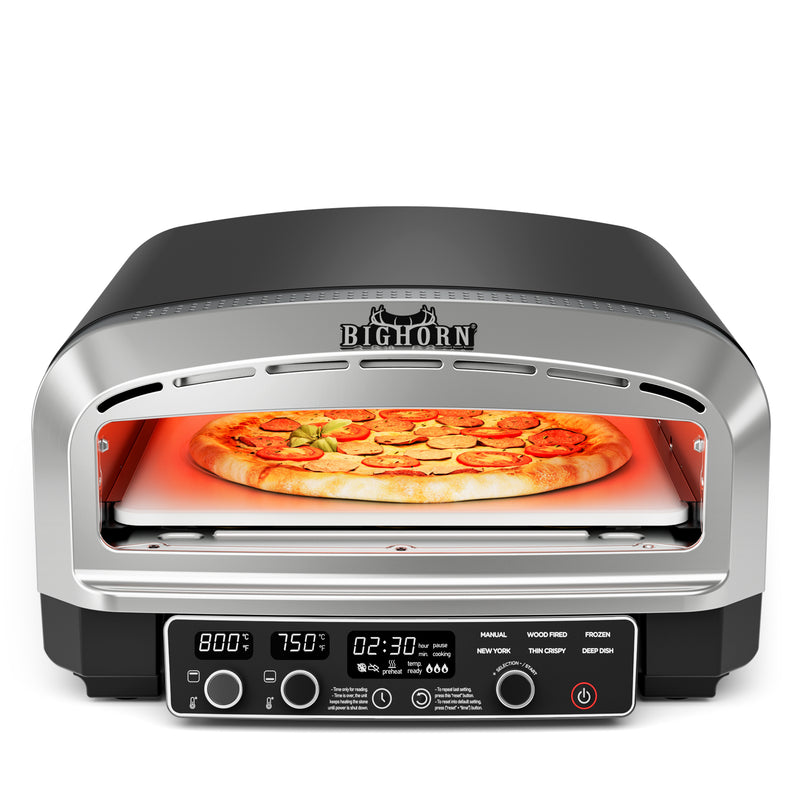Unlock the Secret to Perfect Pizza: Discover the Magic of Electric Indoor Ovens!
Electric indoor pizza ovens are becoming a staple in many households, particularly among pizza lovers who crave that perfect slice without the hassle of traditional methods. These compact appliances offer an innovative way to create artisanal pizzas right in the comfort of your kitchen. As more people discover the joy of crafting homemade pizzas, the demand for electric indoor pizza ovens continues to rise. In this article, we will explore how these machines work, the benefits they offer, and some practical tips for using them effectively. Whether you are a novice chef or a seasoned foodie, understanding the magic behind electric indoor pizza ovens will elevate your pizza-making game.

How Electric Indoor Pizza Ovens Work
At the heart of every electric indoor pizza oven are powerful heating elements that ensure even cooking and temperature control. Unlike traditional ovens, which rely on a larger space and take longer to preheat, electric pizza ovens are designed for rapid cooking at high temperatures, often exceeding 700°F. This intense heat mimics the conditions of a professional pizza oven, allowing for a perfectly crisp crust while keeping the toppings moist and flavorful.
Electric indoor pizza ovens typically feature a stone or ceramic cooking surface that absorbs and radiates heat effectively. This ensures that your pizza is cooked evenly from the bottom up. Many models come with adjustable temperature settings, allowing users to customize their cooking process based on the type of pizza being made, whether it’s a thin crust, deep dish, or gourmet style. In contrast to traditional ovens, which can produce uneven results due to their larger size and varying heat distribution, electric pizza ovens provide a focused cooking environment, making it easier to achieve that coveted pizzeria-quality pizza at home.
Benefits of Using Electric Indoor Pizza Ovens
The benefits of using electric indoor pizza ovens are numerous and appealing to both casual cooks and culinary enthusiasts. One of the primary advantages is convenience; these ovens are easy to use and require minimal setup. You can have your pizza dough ready, set the oven to the desired temperature, and have a delicious pizza in as little as 10 to 15 minutes. This is particularly handy for busy weeknights or impromptu gatherings with friends.
Additionally, electric pizza ovens are energy efficient compared to traditional ovens. They consume less energy because they heat up faster and require less preheating time. The ability to reach high cooking temperatures is also a significant benefit, as it helps to develop the ideal crust texture. My friend Sarah, who loves hosting pizza nights, swears by her electric oven for whipping up pizzas quickly without heating the entire house, especially during the summer months.
Tips for Making Perfect Pizza
When it comes to toppings, less is often more. Overloading your pizza can lead to sogginess, so opt for a balanced approach with a mix of flavorful sauces, cheeses, and fresh vegetables. Be mindful of the cooking times; most electric pizza ovens will have guidelines, but it may take a few tries to get your personal preferences just right.
Cleaning and maintenance are also vital for longevity. After each use, allow the oven to cool before wiping down surfaces with a damp cloth. Regularly check for any residue on the heating elements to ensure optimal performance. A well-maintained oven not only cooks better but also lasts longer.
Common Mistakes to Avoid
Even with the best intentions, mistakes can happen when using electric indoor pizza ovens. One of the most common errors is not preheating the oven adequately. Many users are eager to start cooking and skip this step, resulting in unevenly cooked pizzas. Always allow your oven to reach the desired temperature before placing your pizza inside.
Another frequent mistake is using the wrong type of baking surface. While some people may attempt to cook directly on the oven rack, using a pizza stone or pan will provide better results by evenly distributing heat. Finally, it's crucial to avoid opening the oven door too frequently during the cooking process, as this can lead to heat loss and extended cooking times.
Final Thoughts on Electric Indoor Pizza Ovens
Electric indoor pizza ovens are an exceptional investment for anyone who loves pizza. Their convenience, energy efficiency, and ability to reach high temperatures make them an ideal choice for creating delicious homemade pizzas. By understanding how these ovens work and following practical tips for usage, you can ensure that every pizza night is a success. So why not give it a try? With an electric indoor pizza oven, you can unlock the secret to perfect pizza right in your own kitchen!







Comments